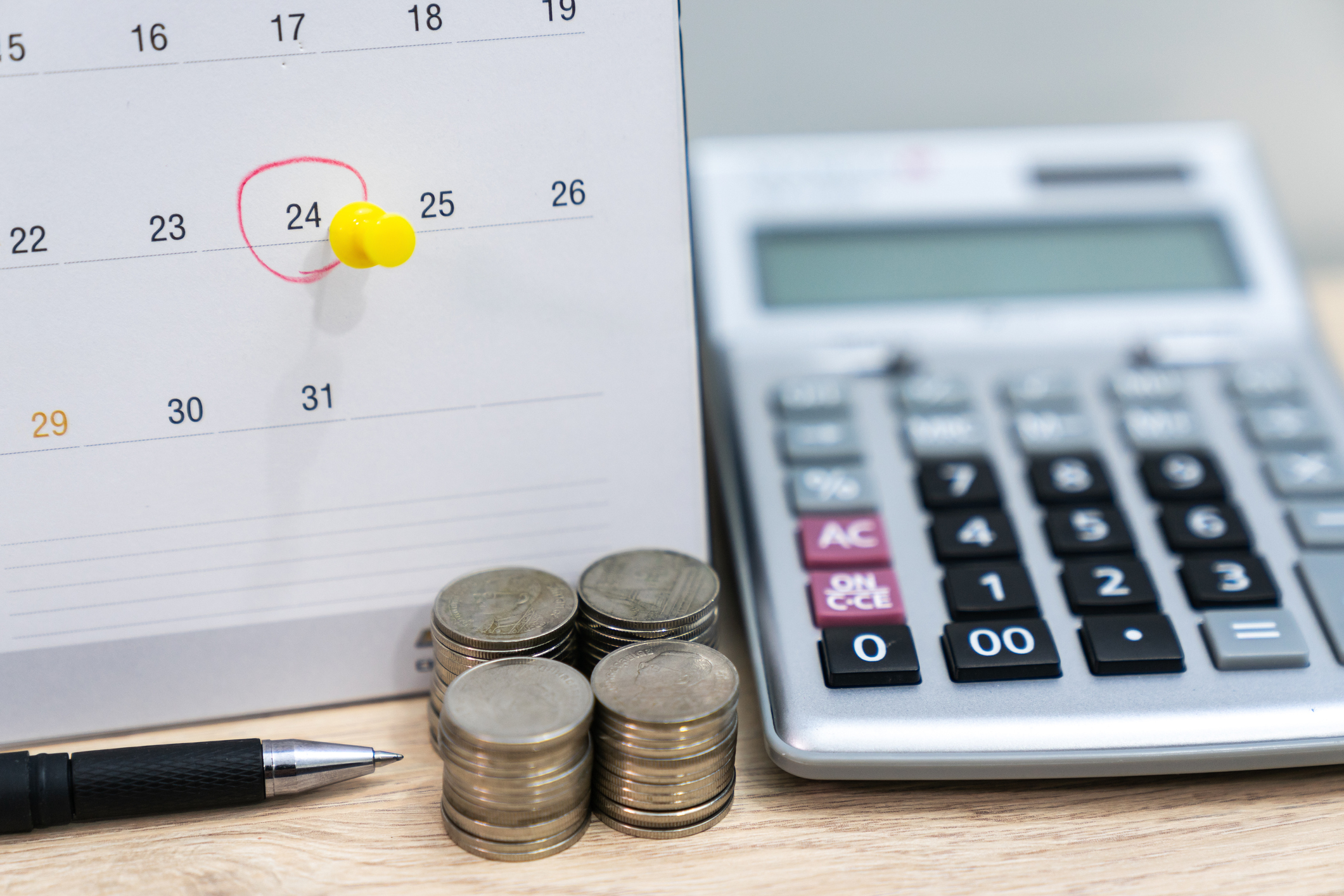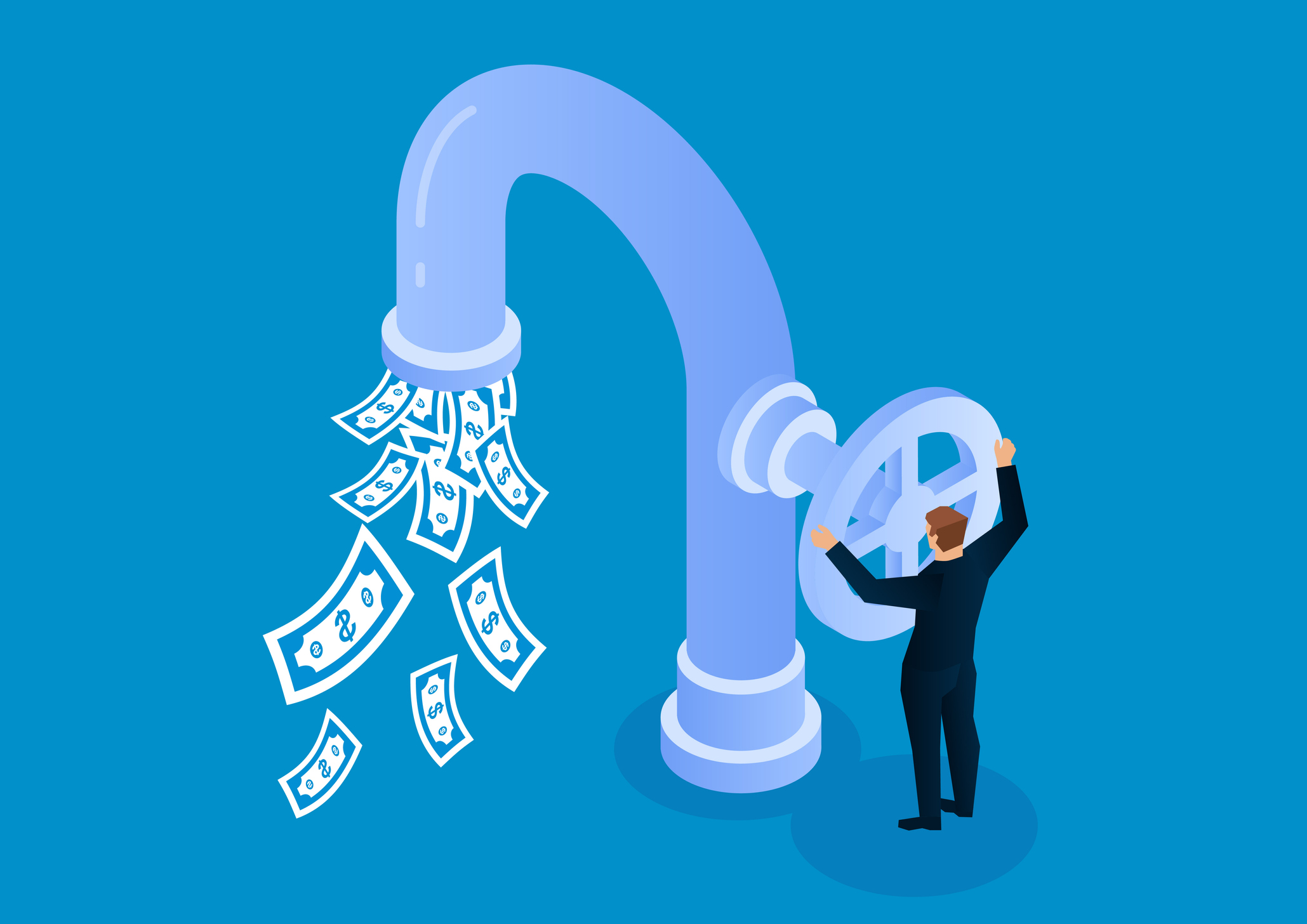7 Secrets of Highly Successful Investors
Prosper in this volatile market (or any other) by focusing on fundamentals.

In investing, it’s as important to practice good habits as it is to avoid bad ones, and the stakes have rarely been higher. The longest bull market on record is in its 11th year, volatility is sky-high, the economy is uncertain and market sentiment is skittish. But long-term investors should rise above the fray and focus on the fundamentals. You already know you shouldn’t buy stock on a tip from your Uncle Fred. But it’s even more important to set appropriate goals, save regularly and monitor your progress. Don’t beat yourself up for the occasional mistake. But if you follow the seven steps below, you’re likely to feel good about your portfolio over the course of a long investing career.
Have a plan
“I want to make money” isn’t a plan. No one invests to lose money. Serious investors set goals and create an investment plan to meet them. Goals can be short-term or long-term. A short-term goal might be a new car. Long-term goals could be sending kids to college, retiring comfortably or leaving a legacy to your heirs.
It helps if you write down your goals. “If you don’t write them down, they disappear into thin air,” said Ray Ferrara, a certified financial planner in Clearwater, Fla. And review your goals regularly (preferably annually) to see how you’re doing and whether your goals, or your plans for meeting them, need to be revised. A vacation home in the Rockies might seem a little less important when you start learning about grizzly bears. And a consistently poor-performing mutual fund might need to get the boot.

Sign up for Kiplinger’s Free E-Newsletters
Profit and prosper with the best of expert advice on investing, taxes, retirement, personal finance and more - straight to your e-mail.
Profit and prosper with the best of expert advice - straight to your e-mail.
Setting goals is important because time is a crucial element in investing. Use long-term investments, such as stocks and bonds, to achieve long-term goals. Use cash and other safe, interest-bearing investments for short-term goals. “Investors are most successful when they know what their goals are and what their time horizon is,” says Rob Williams, vice president of financial planning at the Schwab Center for Financial Research.
Say you decide that you want to buy a boat in two years for $10,000. You have $5,000 saved. If you think stocks will double your money in a couple of years, you’re facing very long odds. It’s more likely that aggressive investing over a short time will lead to a big loss (your $5,000 would have shrunk by $1,000 in last year’s stock market correction).
You’d be better off saving a little more than $200 a month and putting that cash in a money market mutual fund. You won’t earn much money, but you won’t lose any, either, and you’ll get the boat you want. But if you’re 30, you’d be foolish to put all your money in a money fund. Treasury bills, a good proxy for money fund returns, have yielded an average 3.33% a year since 1926, according to investment research from Morningstar. At that rate, your money will double every 22 years. By contrast, the long-term annualized return on large-company stocks is more than 10%. Even a modest amount of stocks will increase your returns over the long haul.
You can keep a separate account if you want to speculate and swing for the fences (or act on Uncle Fred’s stock tip). Just keep it small. Otherwise, set realistic goals and keep most of your investments aimed at achieving them.
Save early and often
Time is on your side when you invest. The earlier you start, the easier saving will be. If you invest $10,000 in large-company stocks and earn the average annual return since 1926—10.4%—you’ll have $26,896 after 10 years. After 30 years, you’ll have $194,568. That’s the magic of compounding.
And no, there’s no guarantee that you’ll earn 10.4% a year. But even if you averaged 7% a year, you’d have $76,123 in your account after 30 years. “Recognize that returns will be what they will be,” says Rob Arnott, chairman of the board of Research Affiliates. You can’t control that. But you can control the amount you save. “Save assiduously and invest with gusto,” Arnott says. “You can’t invest what you have spent.”
If you’re not young, just start saving as much as you can, and take advantage of catch-up contributions if you’re 50 or older and investing in a retirement account. You can contribute an additional $6,000 over the $19,000 cap on annual contributions to a 401(k) or similar plan in 2019, and an additional $1,000 over the $6,000 IRA limit. A 50-year-old man can expect to live, on average, another 30 years, according to the Social Security Administration. A woman can expect to live another 33 years. Half of 50-year-olds can expect to live even longer.
Your kids or grandkids can get a terrific boost if you help them along. Consider giving a grandchild or child a leg up on his or her own retirement. Say the child is 15 years old and has $2,000 in employment income from a part-time job. You could match that sum, and he or she could invest it in a Roth IRA, where returns will compound tax-free for decades. For example, a 15-year-old who invests $2,000 a year for just five years, then ceases contributions, would have close to $1 million at retirement age, assuming a 10% annualized return. Someone who doesn’t start investing until age 30 and puts in $2,000 every year until age 65 would wind up with just $596,254.
Invest on autopilot
Make investing automatic. The best way to do that is to invest a fixed dollar amount regularly, as you might do already in an employer’s retirement plan. The practice, known as dollar-cost averaging, ensures that you buy more shares when they are cheap and fewer when they are expensive. “Don’t underestimate the impact of dollar-cost averaging,” says Regina Saio, a financial planner in Lake Grove, N.Y.
Consider an investor who put $200 a month into Vanguard 500 Index Fund (symbol VFIAX) in 2008, a snake-bitten year for stock investors. On January 1, 2008, $200 would have bought 1.5 shares of the fund. By January 1, 2009, close to the bottom of the bear market, the same $200 would have bought 2.33 shares of the fund.
Dollar-cost averaging has a psychological advantage, too. If you invest a little every month, you can’t put all your money in at the top of the stock market, which every investor dreads. Furthermore, if your money never hits your bank account and goes directly to savings, you’re less likely to tinker with it—and that’s a good thing.
Of course, your firm may match your 401(k) contributions; the average match is 4.7% of your salary, according to Fidelity. Companies have caught on to the power of automatic investing, and many now offer auto-escalation plans, which increase your contribution each year until you hit the maximum annual contribution.
Keep costs low
Wall Street has long cultivated the notion that you have to pay premium prices for good performance. Thanks to people like the late John Bogle, founder of Vanguard, we know that’s horse pucky. “A bad investor with low costs can do better than a good investor with high costs,” says Gary Schatsky, a financial planner in New York City.
The math is simple. Consider two funds, both of which have a 10% return before expenses. The Whizbang Fund charges 1.5% a year, while the Vanilla Fund charges 0.5%. A $10,000 investment in the Whizbang fund would be worth $115,583 after 30 years. The same investment in the Vanilla fund would be worth $152,203, or 32% more than the Whizbang fund.
These days, even a 0.5% expense ratio can seem high. Morningstar lists 1,560 exchange-traded funds with expense ratios of 0.5% or less; 520 have expenses of 0.2% or less. Fidelity Investments offers four mutual funds with a zero expense ratio.
Moreover, there’s no need to pay any fees to buy a mutual fund. Charles Schwab, for example, offers more than 3,900 mutual funds that you can buy with no sales fee or fee to trade. So do E*Trade, Fidelity, Interactive Brokers and TD Ameritrade. Brokerages often run special cash or free-trade offers for new customers, so if you’re looking for a new brokerage, it can pay to move (see We Rank the Online Brokers).
Minimizing brokerage charges is just one way to save. Lowering your investment taxes can save tens of thousands of dollars over the long term. For many investors, it’s a no-brainer to contribute regularly to a tax-deferred retirement plan, such as a 401(k) plan or an IRA. Traditional retirement plans merely postpone taxes until you retire at age 59½ or older, but tax-free compounding still gives your savings a tremendous boost.
For example, Fidelity Contrafund (FCNTX) gained an average 15.4% a year the past 10 years before taxes through the end of June, according to Fidelity. If you had paid taxes on distributions, you’d have gained 14.3%. True, you’ll have to pay taxes on money that you withdraw from your retirement account eventually, but many people are in a lower tax bracket in retirement than they are during their working years.
Investing in a tax-deferred account also makes saving more affordable because your contributions aren’t taxed until you start taking withdrawals. If you make $50,000 a year and contribute 6% of your salary to a 401(k)—assuming you live in a state with no income tax—you’d sock away $250 a month in your retirement plan. But your paycheck would fall by just $188.
If you’re using after-tax contributions to save for retirement in a Roth IRA, your withdrawals will be free from taxes, and you’ll be able to withdraw your contributions tax-free at any time. If you take a distribution of Roth IRA earnings before you reach age 59½ and before the account is five years old, however, the earnings may be subject to taxes and penalties.
Investors who trade relatively frequently shouldn’t overlook the main benefit of a taxable account, which is the ability to offset gains with losses. You can use your net capital losses to offset gains, and you can deduct an additional $3,000 of losses from your income. Losses above that can be carried forward into the next taxable year.
An added bonus is that your heirs’ cost basis is based on the stock’s price the day you die (or your estate’s settlement date), rather than the price you paid for the stock. If someone bought Amazon at $307 per share on August 1, 2014, and died on August 1, 2019, for example, the heirs would calculate their gain based on the stock’s $1,855 share price that day.
Diversify
Some of the world’s wealthiest people got that way by owning company stock. Think Amazon.com CEO Jeff Bezos, for instance, or Microsoft founder Bill Gates. For every Jeff Bezos, however, there are dozens of people like those who invested in Enron, the defunct energy giant. They lost everything by putting all their money in the stock of the company they worked for.
Investing in a single stock not only carries market risk—the possibility that the stock market as a whole will fall and take your stock with it—but a host of other risks. There’s industry risk, which investors in energy stocks have suffered because of oil-patch woes in recent years. There’s management risk, which shareholders in General Electric can tell you all about. And there’s the risk of outright fraud, as was the case with Enron.
That’s why financial planners always urge investors not to fall in love with their employer’s stock, particularly if you hold it in a retirement plan. “When people own too much company stock, we always say, ‘We’re glad you love your company, but let’s not put it all there,’ ” says Mark Bass, a financial planner in Lubbock, Texas.
The main reason to invest in a mutual fund is to diversify away some of the risks of single stocks. True, actively managed funds carry the risk that the manager is an idiot, although that’s reasonably rare. And even a diversified idiot is better than a non-diversified one. In a low-cost diversified ETF or index fund, such as Vanguard Total Stock Market Index (VTSAX), which charges 0.04% in annual expenses, your only real worry is market risk.
Unfortunately, market risk can be a big worry. In the 2007–09 bear market, the Vanguard Total Stock Market Index fund lost a cumulative 55.3%. You’d need a 124% gain just to get back to even after that kind of loss. To ameliorate stock risk, you need something that doesn’t move in lockstep with the stock market—such as bonds. During that bear market, Vanguard Total Bond Market Index Fund (VBTLX), which carries an expense ratio of 0.05%, returned 7.4%. Vanguard Balanced Index Fund (VBIAX), which charges 0.07% and invests 60% in stocks and 40% in bonds, lost 36%—not great, but better than Total Stock Market Index.
You can further diversify by investing internationally. This year, the top-performing developed stock market—in U.S. dollars—is New Zealand, up 25.5%, according to MSCI. Schwab International Index (SWISX) will give you broad exposure to developed foreign markets for just 0.06% in annual expenses. For emerging markets, try Baron Emerging Markets (BEXFX), charging 1.36%. It is a member of the Kiplinger 25, the list of our favorite actively managed, no-load funds.
Although U.S. stock market performance has beaten all other developed markets over the past decade, international stock performance runs in cycles. From 2003 through 2007, for example, the S&P 500 delivered an average 12.8% return, while the MSCI Europe, Australasia and Far East index gained 21.6% and the MSCI Emerging Markets index soared 37.0%.
Being diversified means that your portfolio will lag the latest hot stock, or even the S&P 500 when it’s on a tear. On the other hand, you won’t lose as much when hot stocks or hot markets go cold. In the long run, that’s just as important as riding markets up—and it will help you sleep at night, too.
Avoid traps
If you want to see your biggest enemy when you’re investing, look in the mirror. Our minds are often wired to do exactly the wrong thing. Consider recency bias, which is a nice way to say “chasing performance.” People flock to funds that are up 30% when the stock market is up 20% because we all love a winner.
Another trap is thinking that you can time the market, jumping in for bull markets and out for bear markets.
But you’re supposed to buy investments when they are cheap and sell them when they are expensive, and a fund that’s up 30% probably isn’t sitting on a bunch of cheap stocks. It’s more likely that the fund’s future performance will return to average over time—a phenomenon known as reversion to the mean.
Another trap is thinking that you can time the market, jumping in for bull markets and out for bear markets. It just doesn’t work, and trying to do it hurts your performance. A recent study by Morningstar found that the average investor lost nearly half a percentage point in returns by moving in and out. That performance gap gets worse around major market turning points, because investors tend to panic and sell near market bottoms, missing out on rebounds. “To make the most of your mutual funds, you need a good plan and the willingness to stick with it amid all the drama in the markets,” says Russel Kinnel, director of manager research for Morningstar and one of the authors of the study. As the chart on the previous page makes clear, patient investors with a long-term view will do well even after investing at an inopportune time.
You may think you’re smarter than everyone else in the market, but the odds are good that you’re not. And that misconception can lead to a myriad of mistakes. The first is hanging on to a losing investment for too long. Suppose you’d bought General Electric in September 2014 at $24.90. By July 2016, it hit $31.66. Great! But the stock slid to $16.78 by the end of 2017.
A loss of that magnitude means you should reevaluate your thinking. “Forget about what I expect will happen,” says Arnott. “Ask, ‘What does the market expect, and is there more likelihood of a positive or a negative surprise?’” As it turned out for GE, the market expected worse. GE slashed its dividend to a penny a share in October 2018, and the stock hit a low of $6.45 in December of that year.
By that point, you had lost 74% of your investment—perhaps permanently. Being unwilling to admit mistakes is one of the most common investor traps. Set an amount you’re willing to lose and start selling when you hit that level, no matter how much you love the stock.
With mutual funds, check to see how the fund is doing compared with similar funds. If your fund is lagging by 10 percentage points a year, see if something has changed. Is there a new, less-competent manager or a change in management style?
Withdraw sensibly
The point of investing money is to spend it eventually. Sometimes, that’s an easy decision. If you saved $10,000 to buy a boat, spend $10,000 to buy a boat. When it comes to retirement, the decision is less straightforward. It’s an equation in which one variable equals the money you have, and the two most important variables—how much you’ll earn and how long you’ll live—are unknowable.
A rough rule of thumb is that you can make an initial withdrawal of 4% of your portfolio and adjust that for inflation each year. If you have a $1 million portfolio composed of 50% stocks and 50% bonds, you could withdraw $40,000 in the first year and adjust it upward for inflation, which has averaged 2.88% since 1926, according to Morningstar. In most cases, this will work just fine for 30 years.
One case in which it didn’t work was the decade starting in 1999, when two vicious bear markets would have sent your savings on the road to Palookaville. Taking withdrawals during a bear market simply depletes your account faster and further. And withdrawals during subsequent bull market years reduce the size of your gains.
You can adjust your withdrawal rate up or down—modestly—as you become accustomed to your retirement budget. Financial planners say you can live on 70% to 85% of your preretirement income, but many people find that travel and other activities mean they spend about as much, or more (at least initially), than they did before they retired.
To combat the possibility of running out of money, many planners suggest keeping a year or two of your living expenses in bank certificates of deposit or money market accounts, or in money market funds, and using that bucket of cash for withdrawals when stocks or bonds are falling. “You need to make sure you have enough sleep-at-night money,” says planner Mark Bass. You can replenish your cash bucket in subsequent years when the stock market recovers.
Smart investors also rebalance their portfolios as they withdraw. Say that when you retire, you have one-third of your money in stocks, one-third in bonds and one-third in cash. This allocation will go awry immediately as you withdraw money and as markets move up or down. Once a year, you’ll need to get your portfolio back in line with your planned allocation.
Rebalancing means you’re selling high and buying low, which is what you’re supposed to do. More important, it will keep your portfolio’s overall risk at the levels you want. In that way, rebalancing will help you sleep at night—and enjoy the fruits of a lifetime of saving.
Get Kiplinger Today newsletter — free
Profit and prosper with the best of Kiplinger's advice on investing, taxes, retirement, personal finance and much more. Delivered daily. Enter your email in the box and click Sign Me Up.

-
 Trump’s Tax Cut Risks Your SNAP, Medicaid Benefits
Trump’s Tax Cut Risks Your SNAP, Medicaid BenefitsTax Cuts The GOP budget blueprint could slash lifesaving programs for millions of U.S. households.
By Gabriella Cruz-Martínez
-
 Can Trump Fire Powell? A Supreme Court Case Could Decide
Can Trump Fire Powell? A Supreme Court Case Could DecidePresidential posts threaten to overwhelm decades of precedent and tradition, whatever the nine justices decide.
By David Dittman
-
 How Inflation, Deflation and Other 'Flations' Impact Your Stock Portfolio
How Inflation, Deflation and Other 'Flations' Impact Your Stock PortfolioThere are five different types of "flations" that not only impact the economy, but also your investment returns. Here's how to adjust your portfolio for each one.
By Kim Clark
-
 Kiplinger's Economic Calendar for This Week (April 21-25)
Kiplinger's Economic Calendar for This Week (April 21-25)This week's economic calendar features several Fed speakers and a key reading on consumer sentiment.
By Karee Venema
-
 Why I Still Won't Buy Gold: Glassman
Why I Still Won't Buy Gold: GlassmanOne reason I won't buy gold is because while stocks rise briskly over time – not every month or year, but certainly every decade – gold does not.
By James K. Glassman
-
 Should You Use a 25x4 Portfolio Allocation?
Should You Use a 25x4 Portfolio Allocation?The 25x4 portfolio is supposed to be the new 60/40. Should you bite?
By Nellie S. Huang
-
 Retirement Income Funds to Keep Cash Flowing In Your Golden Years
Retirement Income Funds to Keep Cash Flowing In Your Golden YearsRetirement income funds are aimed to engineer a steady payout of cash for retirees. Here are a few we like.
By Nellie S. Huang
-
 10 2024 Stock Picks From An Investing Expert
10 2024 Stock Picks From An Investing ExpertThese 2024 stock picks have the potential to beat the market over the next 12 months.
By James K. Glassman
-
 Special Dividends Are On The Rise — Here's What to Know About Them
Special Dividends Are On The Rise — Here's What to Know About ThemMore companies are paying out special dividends this year. Here's what that means.
By Kim Clark
-
 How to Invest in AI
How to Invest in AIInvestors wanting to know how to invest in AI should consider these companies that stand to benefit from the boom.
By Kim Clark